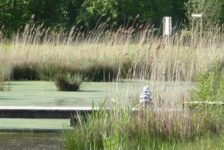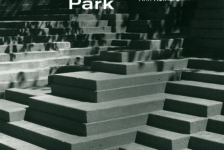Article by Elisa A.M.Varetti Discover 10 excellent Landscape Architecture portfolios and grab some tips to make yours the best. Does making one change to your professional or student portfolio prompt you to want to change it completely? You simply can’t help it. You would like to transform it with new graphics, new text, new everything! You start thinking about it and suddenly realize you need inspiration and ideas — examples to follow, tips and suggestions to borrow to make your new portfolio REALLY amazing. Here are 10 excellent examples to help you make your portfolio the best one you have ever had.
Landscape Architecture Portfolios
1. Enhance your Academic Portfolio In this video, the author shows how a neat graphic, a few well-described projects, and a leit-motif repeating itself on every page can become the winning elements of your portfolio. Each project reveals images of the existing situation, a few drawings, analysis of the place, and various hand-drawn sketches. Plans, sections, and perspectives — with a clear, graphic style and bright colors combined with a rigorous font such as Architext — provide a professional image of this academic portfolio. WATCH >>> Landscape Architecture Portfolio
2. Adding a Full Index Gives your Portfolio a Professional Aura This is a complete and detailed portfolio showing different kind of projects. The index is well organized, helping people understand what they will find inside the portfolio. The image of a tree in the background accompanies us throughout the whole work, perfectly marking the beginning of each category or project. Adding hand drawings instead of just pc renders make the portfolio more personal. While approaching the end, we can experience the author’s increased skills in hand drawing. Making people understand your evolution as a professional is quite important, and the author clearly knows it. WATCH >>> T. Clark Stancil – Landscape Architecture Portfolio
3. Add your Hobbies Showing a very simple but effective graphic style, this portfolio leaves people to fully appreciate every element inside it. Its minimal descriptions allow people to focus on the designs, while the succession of different techniques clearly shows the author’s skills and evolution in both hand drawing and computer graphics. The portfolio ends with a mixed section in which the author shows glimpses of her abilities with other computer software apart from SketchUp. Instead of just writing them down, she preferred to feature them. Good choice! WATCH >>> landscape architecture portfolio
4. Tell a Story In this video, we can see a portfolio telling a story about the author’s passion for landscape architecture. By beginning with the explanation of the cover, he leads people directly inside the fairytale he’s going to tell. From the first pages, the author shows us the places where he has worked, designed a project, or has visited, making us understand his worldwide background. If you have lived or studied in different countries, featuring it in your portfolio could be of interest for your future chief. Here, each project represents a chapter of this story and is identified not only by pictures, but also by words. If you have communication skills, show them by adding keywords throughout your portfolio. It will help in making a good impression. WATCH >>> Landscape Architecture Portfolio
5. A Few Elements Can Create a Powerful Portfolio WATCH >>> Rikerrious Geter Landscape Architecture Portfolio
A few elements can make a portfolio an exceptional work if you know how to use them wisely. Acting as a main theme is the grid on the cover, with six columns, each one showing a detail of the six projects featured inside the portfolio. Each design begins with the same grid, in which the related column is switched on, anticipating what we will find in the following pages. From hand drawing to computer graphics, this portfolio features the author’s skill with concept designs, site plans, perspective views or renders, and a short description. The video ends with an extra section on the author’s computer skills. A real treat! 6. Add Various Information I chose this portfolio because it reflects the author’s personality right from the beginning. You don’t have to go too far to discover that ecology and the natural world are exactly what she likes the most! In fact, just behind the cover there is a short description about her main interests, not to mention her own portrait picture. Adding other information apart from your projects — such as your picture, some models, your work methods, and philosophy — can help people understand how your brain works during the design process and be the difference between you and another candidate. WATCH >>> Carley Rickles’ Landscape Architecture Design Portfolio (UGA-CE+D)
7. Consider it a Proper Book Another way in which you can create your portfolio is to consider it as a proper book, adding all the elements that books usually have: information on the author, index, page numbers, detailed texts supported by some pictures, and a few images describing the project. In this case, a neat graphic style and a few elements are the best way to feature a small number of projects. With just a white background, a sans serif font, and no other color apart from that in the images, this portfolio acquires a professional appearance even if it refers to academic works. WATCH >>> Patrick Strott Landscape Architecture Portfolio
8. Add the Project Period I chose this portfolio beacuse it has a good balance among colors, text length, and various graphic techniques. Even if there are many elements — such as gray and green text, colored images, and a black and green stripe at the bottom of each page — each one seems to get along well with the others, thanks to a precise composition of all the items. The result is a portfolio showing the author’s ability in graphics, hand drawing, and the design process. It is also pleasant to browse and easy to read. WATCH >>> Landscape Architecture Portfolio – James Kelly
9. Relate Each Project to Your Skills Portfolios must be short, otherwise people won’t look at them properly. So how can you insert everything inside them without being extremely boring? Well, this author’s portfolio found out a solution for all of us by just adding to each project the list of the techniques he used during the design process. Pretty useful, isn’t it? He also added his design philosophy, representing it in his portfolio’s cover and explaining it on the first page. WATCH >>> David Neuman – Landscape Architecture Portfolio
10. Make People Understand Your Passion My last choice is one of my favorites because of its fabulous graphics. It also covers a variety of different projects, from small to big, each time giving details and information not only about the project, but also about the design process and the techniques the designer used. His last sections — one about technical drawings and the other about his hobbies — help in defining this professional’s profile. WATCH >>> John Latham – landscape architecture portfolio
Landscape Architecture Portfolios
What you have just seen are 10 examples of excellent portfolios made with different techniques and covering different kinds of work. However, if you are still looking for other examples, why don’t you look around on the Internet by following our article on Top 10 Websites for Online Portfolios, by Win Phyo? By looking and studying others’ work, you can find ideas on how to improve your own portfolio. But don’t forget to have a look as well at our suggestions on some important must-do’s and don’ts, which you can find in our articles 5 Mistakes You Should Avoid When Designing Your Portfolio, by Dalia Zein, and 8 Essential Tips to Make a Knockout Landscape Portfolio, by Naila Salhi. Remember: Your portfolio is your business card! Go to comments Recommended Reading:
- Becoming an Urban Planner: A Guide to Careers in Planning and Urban Design by Michael Bayer
- Sustainable Urbanism: Urban Design With Nature by Douglas Farrs
Article by Elisa A.M.Varetti
Published in Blog











